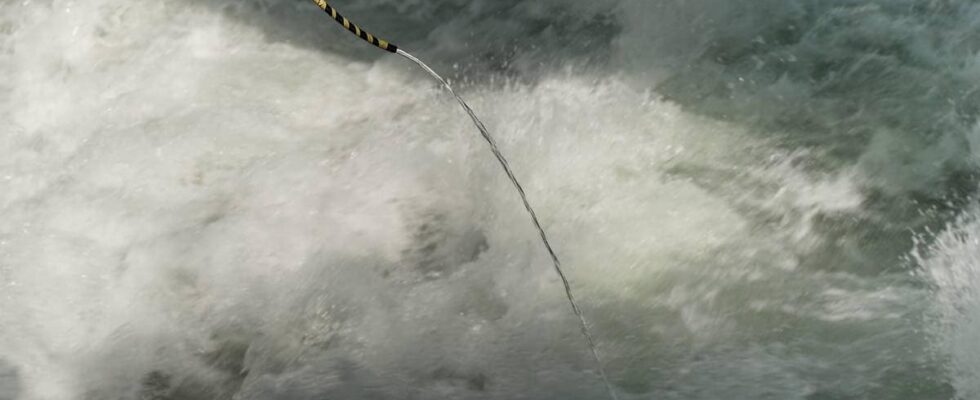The case in summary The national salmon river Driva must be treated with chlorine to get rid of the salmon parasite Gyrodactylus salaris. The chlorine treatment is necessary despite the fact that Norway’s largest fish barrier was built in 2017 to prevent this very thing. Environmental DNA shows that there are still salmon in the river, which is unusual. A whole ten miles of river will be treated, instead of the two miles that were originally planned. The chlorine treatment is not harmful to the salmon and trout in the area, only to the parasite. There is great confidence that the chlorine treatment will be successful. The summary is made by an AI service from OpenAi. The content is quality assured by news’s journalists before publication. A chlorine mixture trickles into the national salmon river Driva, which flows through Innlandet, Trøndelag and Møre og Romsdal. The mixture should come out in the longest stretch that has ever been treated. The aim is to get rid of the salmon parasite Gyrodactylus salaris, which has plagued life in several Norwegian salmon rivers since 1975. But treating the entire river with chlorine was not actually the plan. In 2017, NOK 60 million was spent on Norway’s largest fishing barrier to avoid precisely this. – We should not have to treat the area above the barrier. It prevented new spawning, and fish that were already there would gradually move out into the sea. Without salmon in the river, the gyro would die out by itself, says Jarle Steinkjer, technical director at the Norwegian Environment Agency. Director of the Department of the Environment, Jarle Steinkjer, says that it is positive anyway that they have divided the watercourse with fish barriers. Photo: Eirik Haukenes / news But environmental DNA shows that there are still salmon there. To be absolutely sure, the Norwegian Environment Agency also wants to treat the river above the barrage with chlorine. Ten miles to be treated Therefore, the Norwegian Institute for Nature Research, the Veterinary Institute and the Norwegian Institute for Water Research must treat ten miles of river, and not just the two miles that were initially planned. – We adjust the dose of chlorine so that it is approximately at the same level as the drinking water in Oslo. It is effective against the parasite without harming the salmon and trout in the area. That’s what Anders Gjørwad Hagen, head of research for NIVA, who is involved in carrying out the chlorine treatment in the river, says. Anders Gjørwad Hagen, head of research for NIVA, says that this is the longest stretch they have ever treated. Photo: Eirik Haukenes / news The big advantage of using chlorine is that it does not harm anything other than the parasite. In comparison, the widely used rotenone treatment kills all life with gills. Special salmon According to Steinkjer, the fact that there are still salmon up in the watercourse is very unusual. But he has an explanation for why it is like this in the river Driva. – The salmon here go so high above the sea. We have not been in other rivers where the salmon are able to go all the way up to 600 meters above sea level. He explains that the salmon grows very slowly when it comes up so high and that it therefore takes longer for the fish to swim out to sea. No traces of gyro infection were found in the environmental DNA samples that were taken. The fish barrier in Snøvassmelan in Sunndal is the largest in the country and will prevent spawning fish from passing through. This is how they want to empty the river of salmon that beg for gyro infection. Photo: Eirik Haukenes / news Believe in success – But could you have saved the millions on the fishing barrier? – No, because by building the barrage, almost all the salmon will be gone. The treatment that is taking place now is not a full-scale treatment. We only treat with chlorine in the largest watercourses because there are only large fish left, Steinkjer replies. Steinkjer says that he cannot guarantee that the river will be free of the parasite, but that he has great faith that they will now succeed. – We have been dealing with chemical treatment of waterways for a very long time. We haven’t actually had a failed chemical treatment since 2004, he says. This is what the salmon parasite looks like on the fish. Photo: Eirik Haukenes / news Published 01.08.2024, at 17.15
ttn-69
Spent 60 million to get rid of salmon parasites – still have to treat the entire river with chlorine

